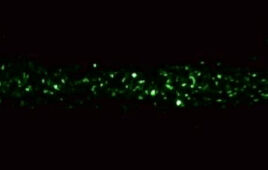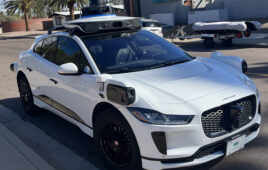by Leland Teschler, Executive Editor
There’s been a lot of hype recently about the rethinking of engineering curriculums. The new prescription for training engineers consists of more hands-on practice, less theoretical classroom work.
To see how this movement is going, I took a look at the course requirements for the engineering school from which I graduated 40 years ago. Big surprise: Freshman engineers there have to take the same courses I did with the exception of drafting. Even many of the course numbers are the same.
That situation is common among even the best engineering schools. “Compared to 40 years ago, there are a number of freshman design courses and a fair amount of design work in the senior year. But the middle is still an engineering science desert. There are elements of the old math-science death march there,” said David E. Goldberg, emeritus professor of engineering at the University of Illinois at Urbana-Champaign.
That “death march” is one reason Goldberg thinks universities are in danger of becoming outmoded. He points out that their cost and value is increasingly under attack by new kinds of educational institutions. Goldberg recently co-authored a book called A Whole New Engineer: The Coming Revolution in Engineering Education in which he explains why engineering programs aren’t likely to improve much without some prodding.
“In academia, there is a lot of log rolling about change—you don’t change my course and I won’t change your course. So nothing much changes,” Goldberg said. “Another problem is that faculty members at large institutions labor under a lot of time pressure. Teaching is just one of the things they have to do. At Illinois, for example, you are a schmuck if you don’t bring in a half-million dollars a year in research money. So, there are incentives to adopt the cheapest way of teaching: Use 20-year-old class notes and give a lecture.”
The teaching methods Goldberg advocates look nothing like traditional lectures or classes. They center on what’s called active learning: It becomes the responsibility of engineering students to learn something rather than the responsibility of professors to force-feed them information. “We’ll have to create learners who can teach themselves what they need to know when they need to know it,” said Goldberg. Student interactions with professors will look more like coaching sessions than like ordinary schoolroom activities, he thinks. Instead of signing up for a course, engineering students might sign on to deliver a project.
And the idea of final exams and regular quizzes might also be consigned to the dustbin of history. “In the future, demonstrating mastery of a subject may be unbundled from taking courses. You might have an independent agency that verifies students have competence in some discipline,” said Goldberg.
But figuring out how students can prove they know their stuff will be less of a hurdle than devising an active learning scheme that works for big schools. “Active learning forces the faculty member to spend more time with students. It doesn’t work well in an environment demanding lots of things from professors. So it won’t work if you try to do it incrementally,” said Goldberg.
That’s an obstacle that makes it tough to pinpoint when engineering education will start to look like a series of projects rather than classes. “This is a hard transformation,” admited Goldberg. “I think over the next decade we’ll see more examples of success and a sharing of techniques that work. By 2025 we’ll have elements of the right stuff at many schools. From that point it will be able to spread.”
Filed Under: Commentaries • insights • Technical thinking






Tell Us What You Think!